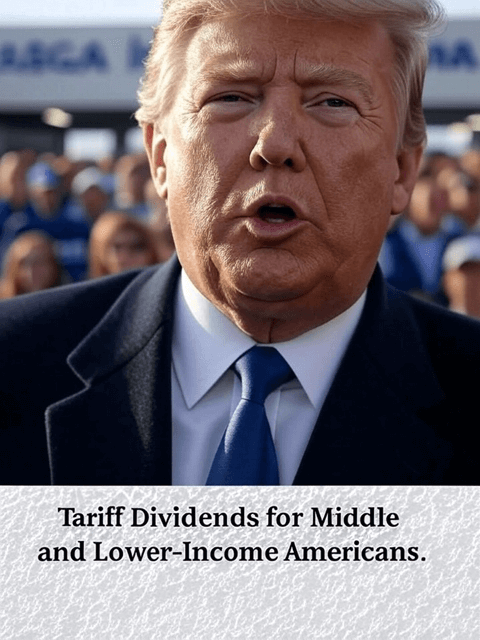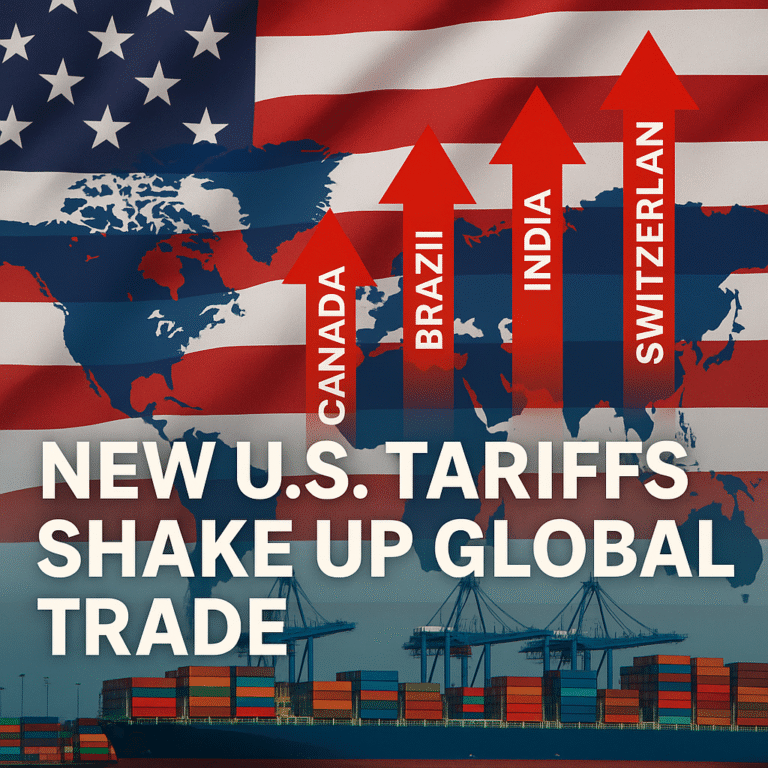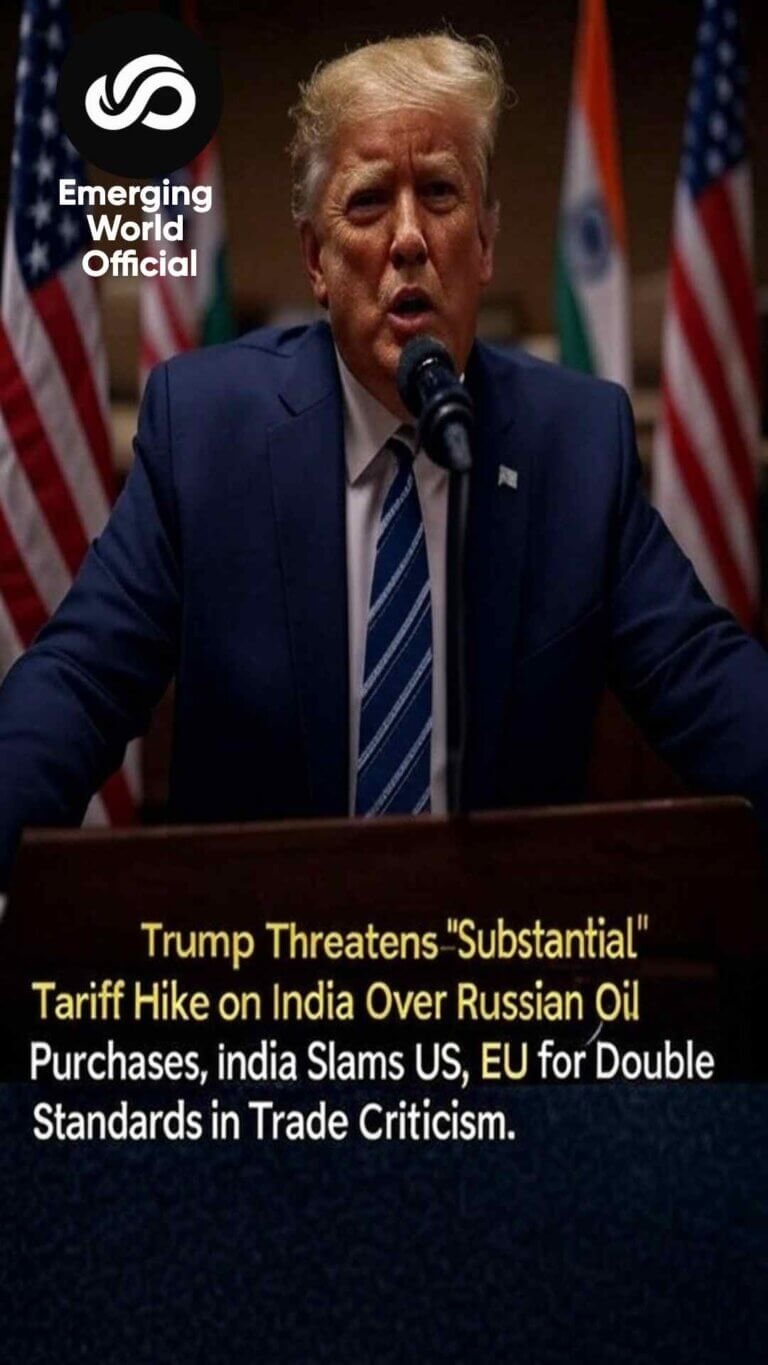Trump Proposes Tariff Rebates for Middle and Lower-Income Americans
August 3, 2025 – Emerging World News

Image is AI generated for reference
On August 3, 2025, U.S. President Donald Trump made a significant announcement that could reshape how tariff revenues are utilized in the United States. Speaking at Lehigh Valley International Airport in Allentown, Pennsylvania, Trump suggested that some Americans could receive a “distribution or dividend” from the revenue generated by tariffs, specifically targeting middle and lower-income individuals.
Trump’s exact words were, “There could be a distribution or a dividend to the people of our country, I would say for people that would be middle income people and lower income people, we could do a dividend.”
This statement came as he was boarding Air Force One after leaving his golf club in New Jersey. The proposal comes at a time when the U.S. government has seen a substantial increase in tariff collections. According to recent reports, by the end of July 2025, the total tariff revenue, including customs duties and certain excise taxes, exceeded $150 billion. Earlier in the month, the figure was around $100 billion, highlighting the rapid growth in these collections.
Trump’s suggestion to distribute a portion of this revenue directly to citizens marks a departure from traditional practices, where such funds typically go into the general treasury. The idea of tariff rebates or dividends is not entirely new, though it is uncommon in U.S. policy. For instance, Sen. Josh Hawley has introduced the American Worker Rebate Act, which proposes giving U.S. adults at least $600, with additional amounts for households with dependent children. While Trump’s proposal does not specify exact amounts, it aligns with the broader concept of providing direct economic relief to citizens through tariff revenue.
Trump further elaborated on the idea, stating, “A little rebate for people of a certain income level might be very nice.” This has sparked interest and debate, as it represents a potential shift in how trade policies could directly benefit American households. The timing of this announcement coincides with the implementation of new tariff rates on various U.S. trading partners, which are expected to further increase government revenue from imports. By proposing to return a portion of this revenue to citizens, Trump may be attempting to offset some of the potential inflationary effects of tariffs on consumer goods while appealing to his voter base.
Economists and policy analysts have mixed views on the feasibility and effectiveness of such a policy. Some argue that it could provide much-needed financial relief to lower-income families, especially in light of rising costs due to tariffs. Others caution that it might not address the root causes of income inequality or trade imbalances, and could potentially complicate existing tax and economic systems.
As of now, no specific details have been released on how the distribution would work, including eligibility criteria, the amount of the dividend, or the timeline for implementation. However, the proposal has already generated significant attention and could become a key talking point in upcoming political and economic discussions.
Reference & Citations:
Share this content:






